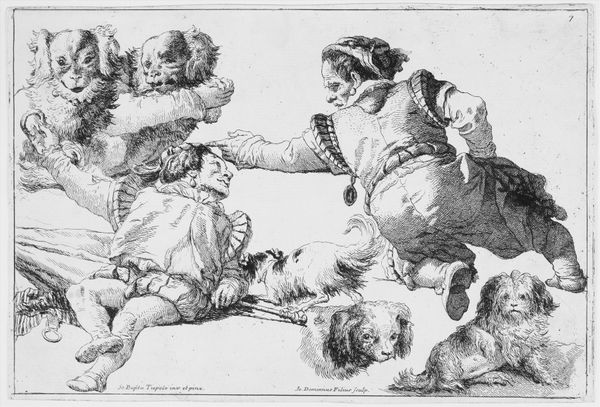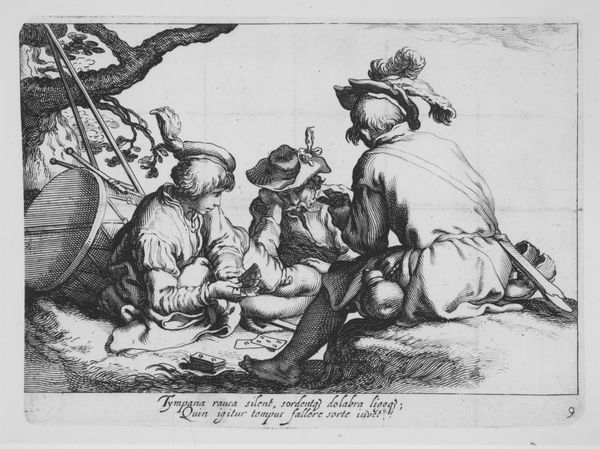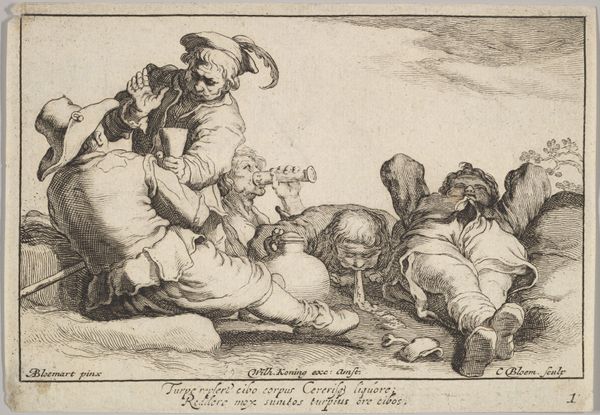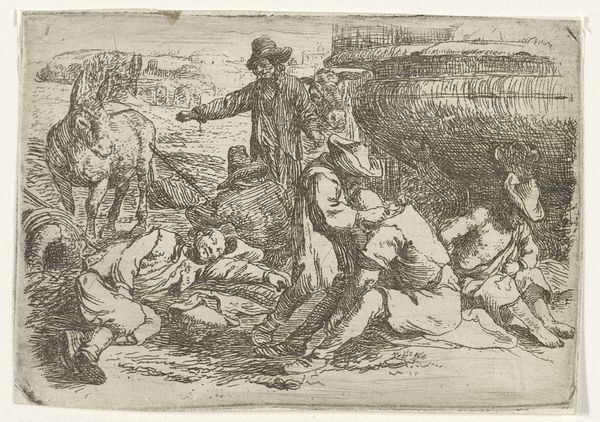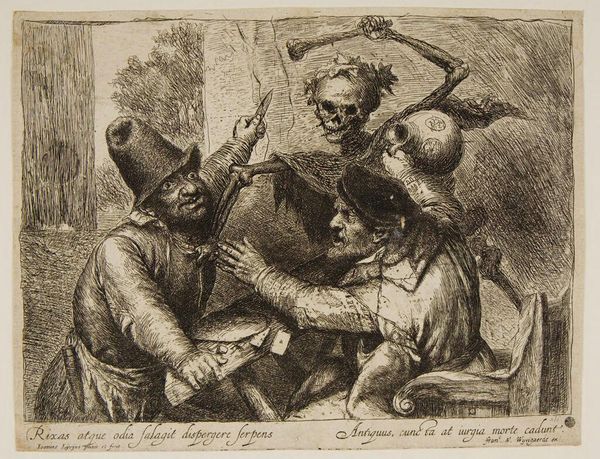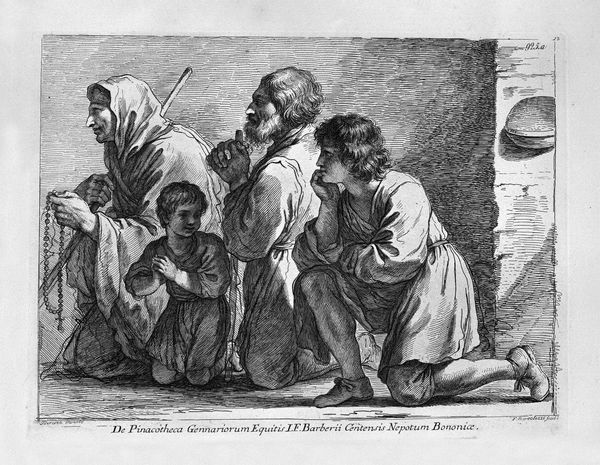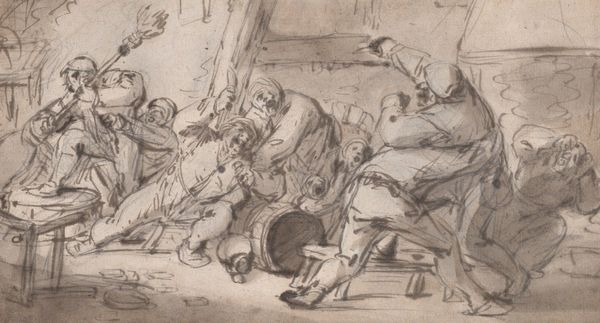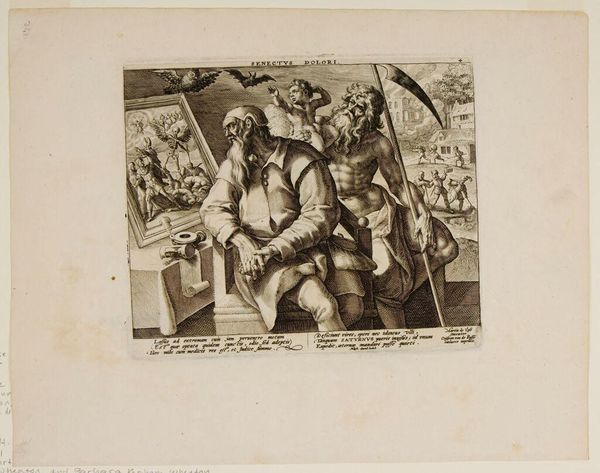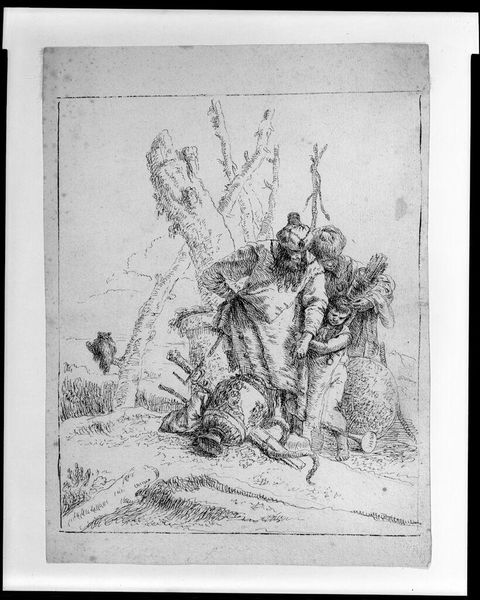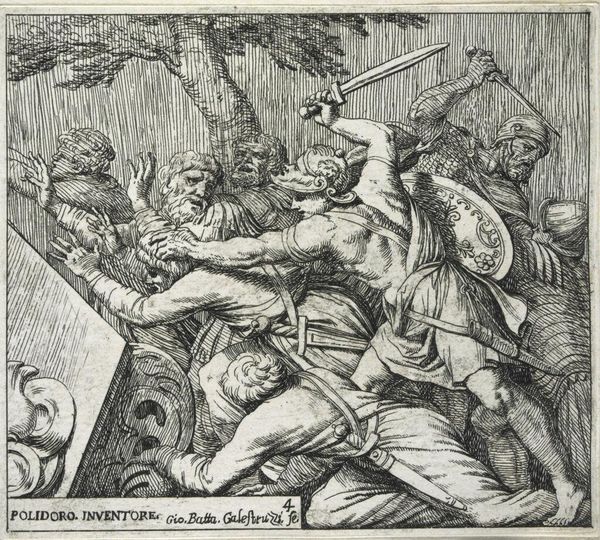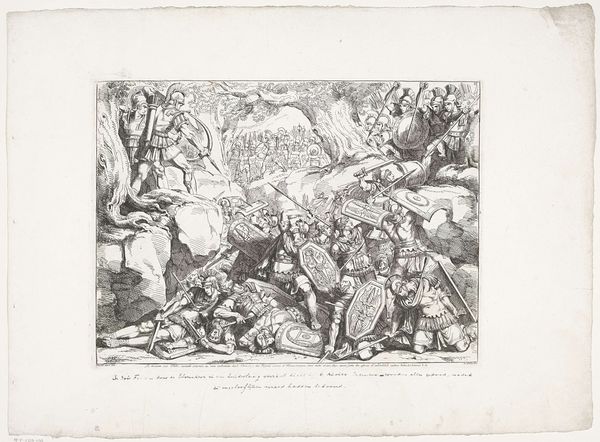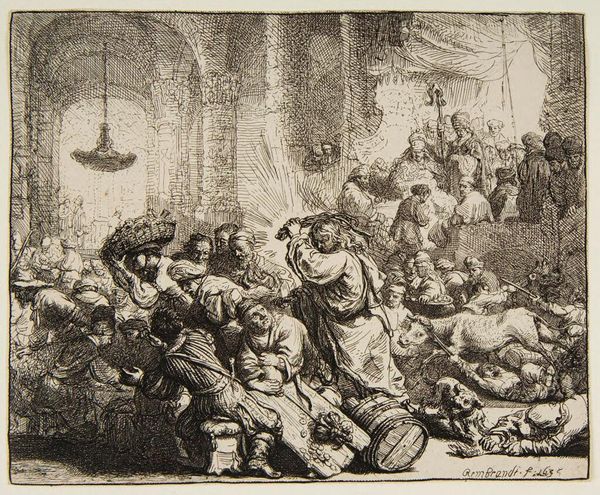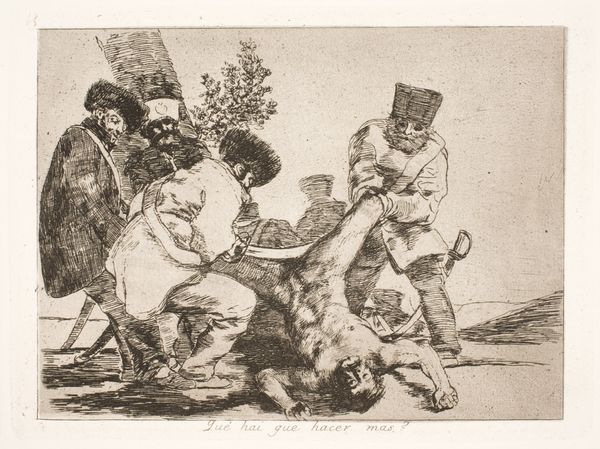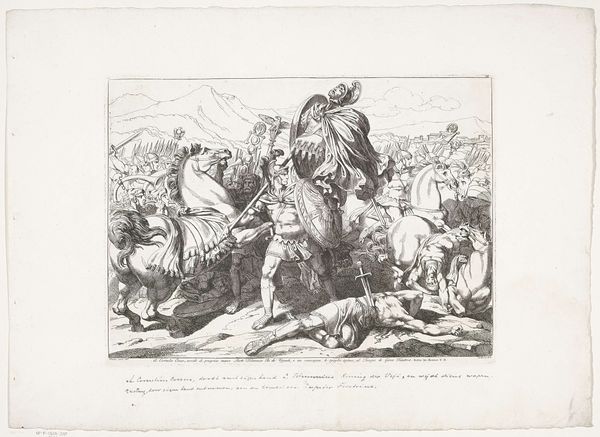
Peasants Drinking, from the series Sixteen Peasant Subjects 1615 - 1684
0:00
0:00
drawing, print, etching, ink
#
drawing
#
dutch-golden-age
# print
#
etching
#
ink
#
men
#
genre-painting
Copyright: Public Domain
Editor: This is "Peasants Drinking, from the series Sixteen Peasant Subjects" by Cornelis Bloemaert, sometime between 1615 and 1684. It's an etching in ink. The scene feels quite debaucherous. What stories do you think this image is telling us about the social dynamics of the time? Curator: Well, look at the way these peasants are depicted. Bloemaert isn't simply showing us a group drinking; he's presenting a commentary on social class and behavior. How might this image reinforce or challenge existing stereotypes about peasantry and moral virtue? Editor: It does seem a bit judgmental, doesn't it? Is the artist making a statement about poverty, or is it more about their personal choices? Curator: Exactly. Consider the historical context. The Dutch Golden Age saw a rising merchant class and with it, evolving ideas about work ethic and social order. How would an emerging bourgeoisie perceive this scene of drunken revelry? Were such images deployed as moral lessons, or perhaps as a way to distance themselves from the "lower" classes? Editor: So it’s less about accurately depicting peasant life and more about shaping a particular narrative for a specific audience? Curator: Precisely. It also brings up issues of visibility. Who gets represented in art, and how? This print circulates, reaching different viewers and embedding certain beliefs about social hierarchies and behaviors. How does that kind of visual culture contribute to maintaining power structures? Editor: That’s a completely different lens through which to view the image. I was initially focused on the activity, not the underlying messages about social class and power. Curator: It’s about recognizing that even seemingly simple genre scenes like this can be potent vehicles for social commentary and the reinforcement of existing power dynamics.
Comments
No comments
Be the first to comment and join the conversation on the ultimate creative platform.
